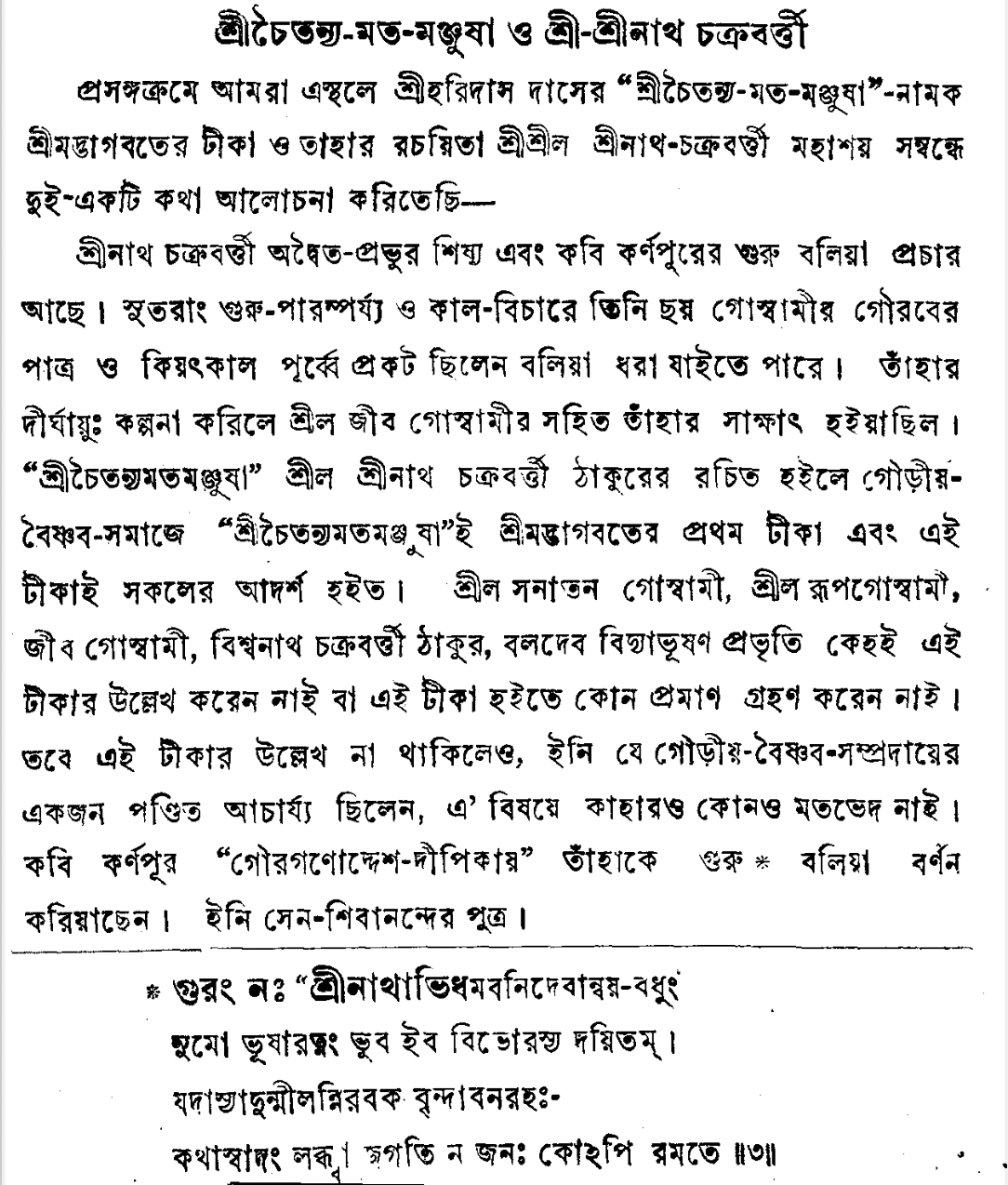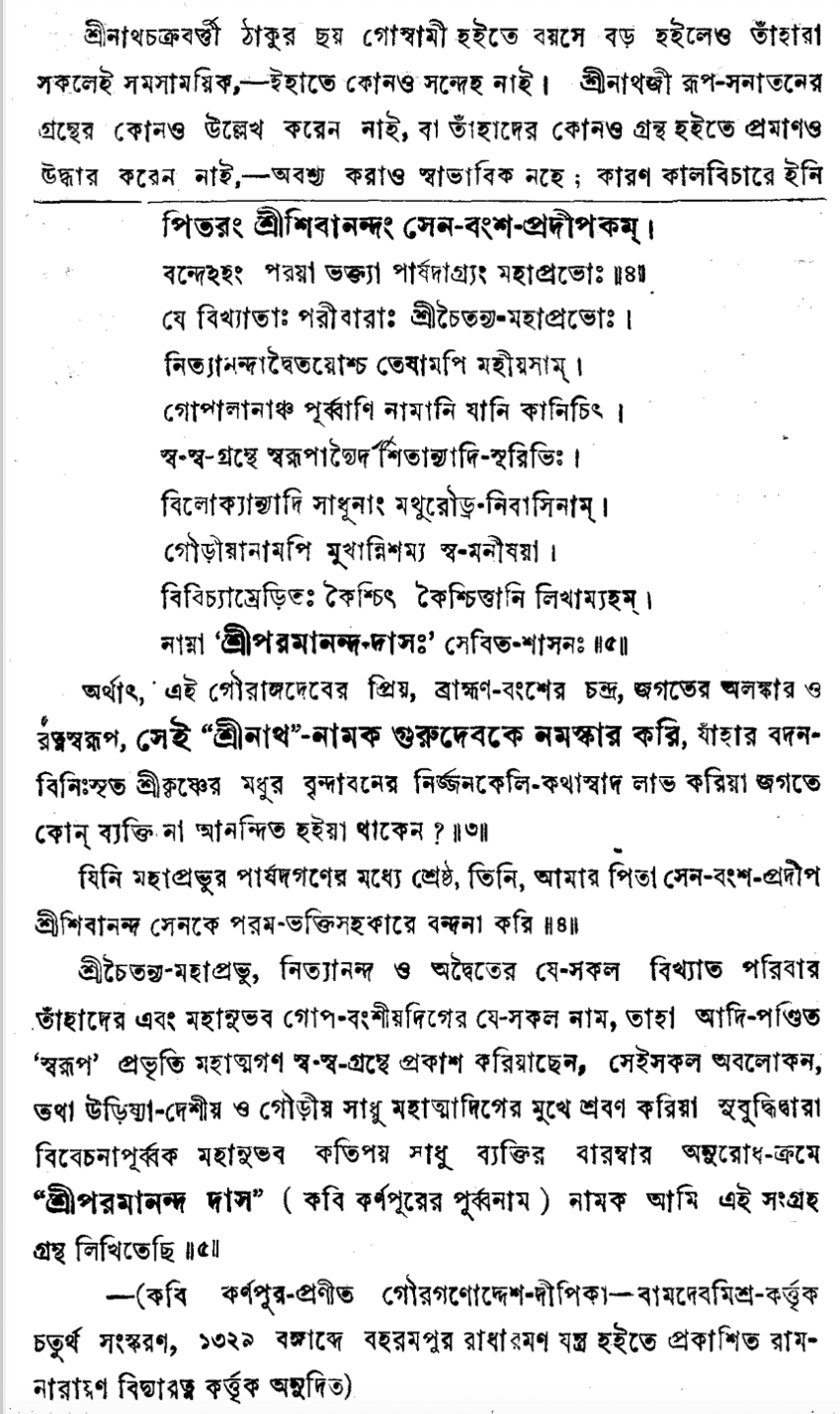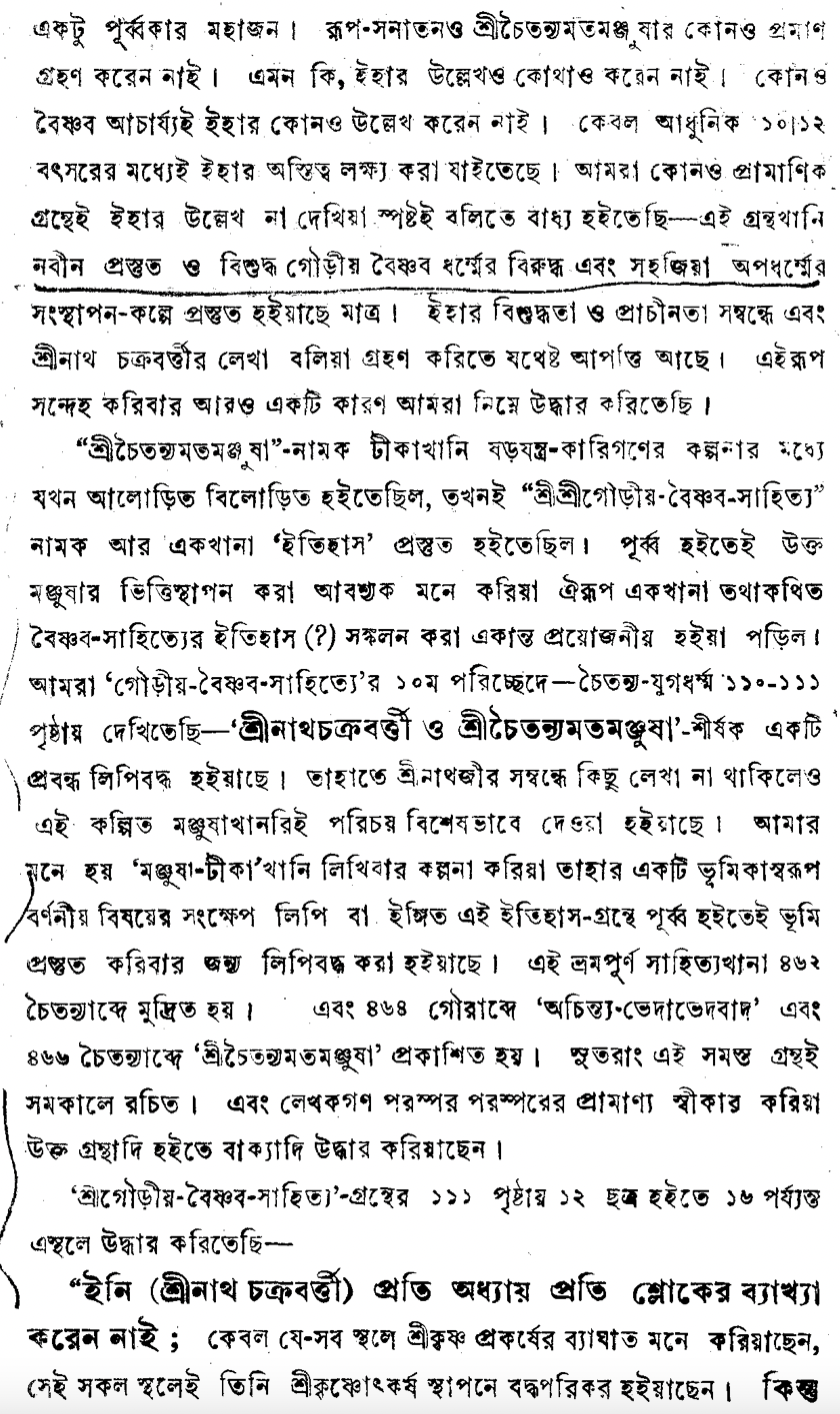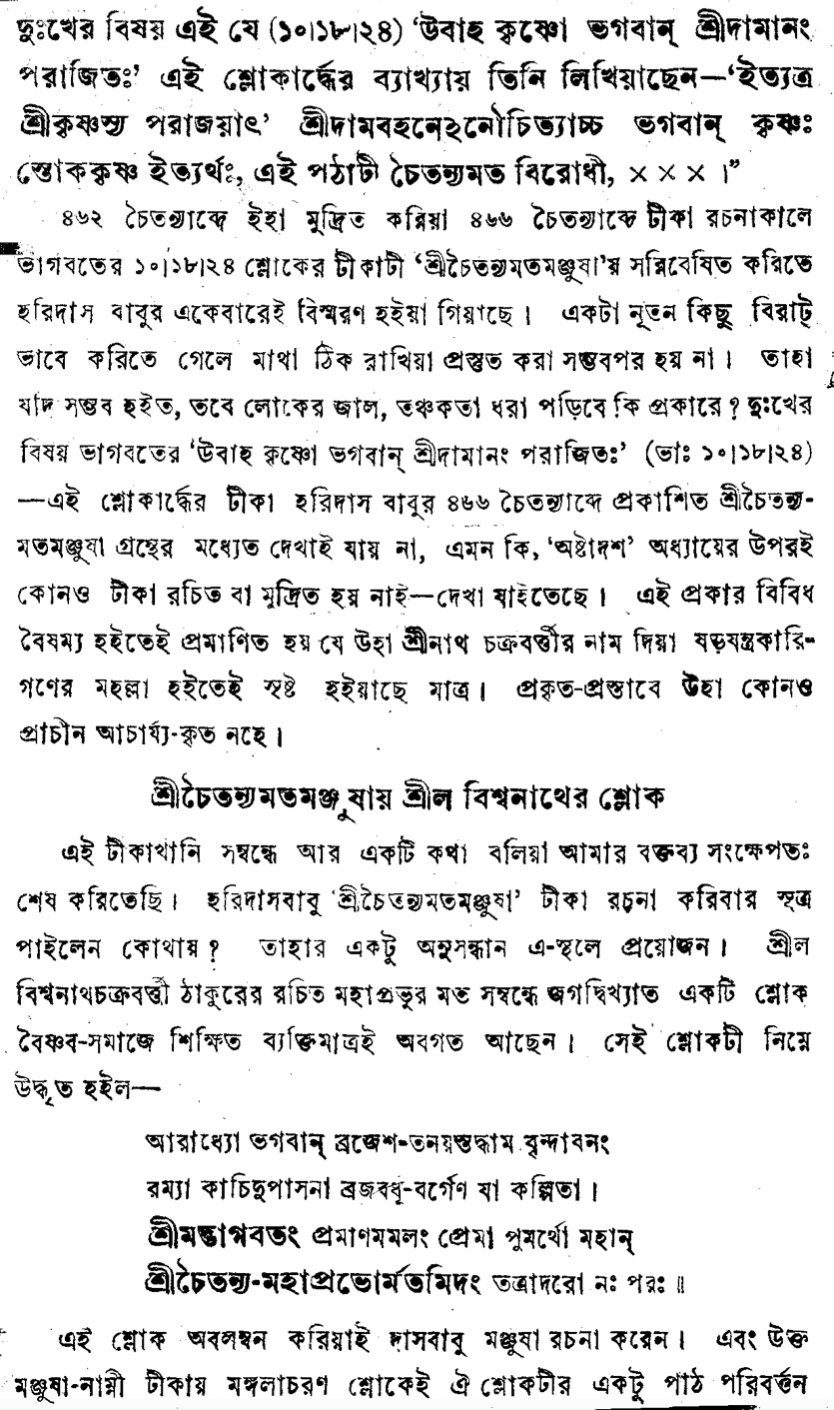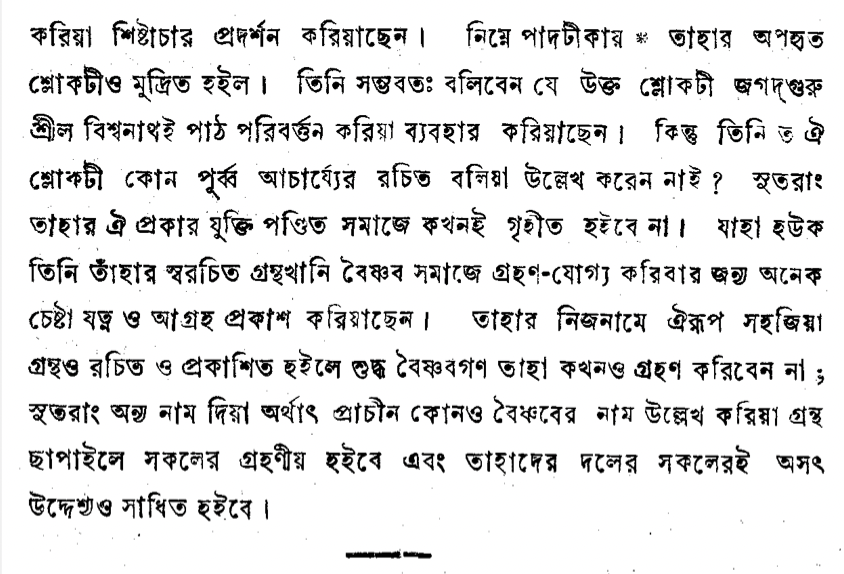Serious Concerns about Śrī Caitanya-mata-mañjuṣā's Authenticity
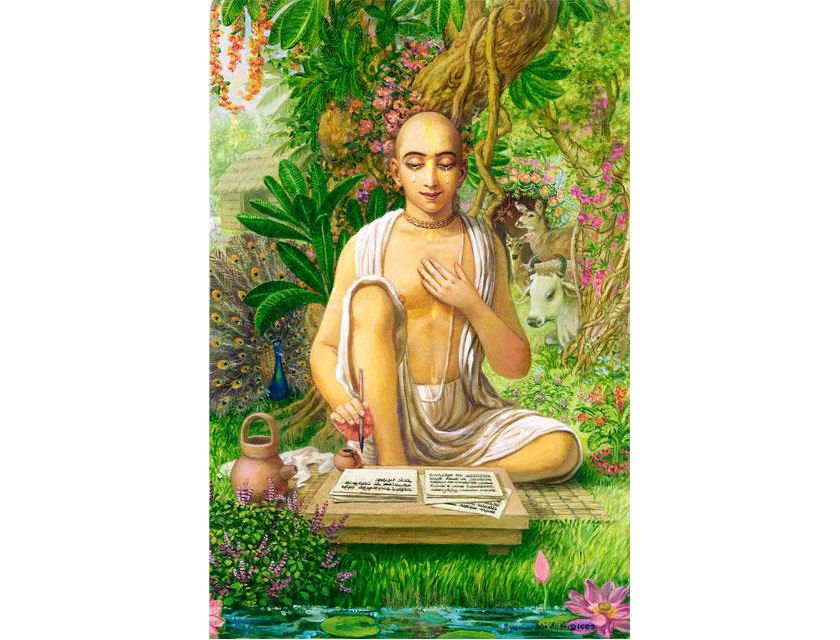
Śrī Caitanya-mata-mañjuṣā and Śrī Śrīnātha Cakravartī
Here we move forward to discuss a few points regarding Śrī Haridāsa Dāsa’s commentary on Śrīmad-Bhāgavatam called “Śrī Caitanya-mata-mañjuṣā” and its supposed author Śrī Śrīla Śrīnātha Cakravartī Mahāśaya:
Śrīnātha Cakravartī was the disciple of Advaita Prabhu and is known to be the guru of Kavi Karṇapūra. Therefore, according to disciplic succession and timeline, he is held in high regard by the Six Gosvāmīs, and it can be assumed that his manifest presence was somewhat prior to theirs. If we imagine he had a very long lifespan, then he would have met with Śrīla Jīva Gosvāmī. If “Śrī Caitanya-mata-mañjuṣā” had been written by Śrīla Śrīnātha Cakravartī Ṭhākura, then it would have been the first ṭīkā on Śrīmad-Bhāgavatam in Gauḍīya-Vaiṣṇava society, and would have been everyone’s go-to standard [ādarśa]. Śrīla Sanātana Gosvāmī, Śrīla Rūpa Gosvāmī, Jīva Gosvāmī, Viśvanātha Cakravartī Ṭhākura, Baladeva Vidyābhūṣaṇa, and others do not mention this ṭīkā and do not quote any evidence from it. Still, even though there is no mention of this ṭīkā, no one has any disagreement about the fact Śrīnātha Cakravartī was a paṇḍita-ācārya of the Gauḍīya-Vaiṣṇava-sampradāya. Kavi Karṇapūra, son of Sena-Śivānanda, describes him as his guru in Gaura-gaṇoddeśa-dīpikā.1
___________________________________________________
1 guruṁ naḥ “śrīnāthābhidham-avani-devānvaya-budhaṁ
numo bhūṣā-ratnaṁ bhuva iva vibhorasya dayitam |
yadāsyād-unmīlan-niravaka vṛndāvana-rahaḥ-
kathāsvādaṁ labdhvā jagati na janaḥ ko ’pi ramate || 3 ||
pitaraṁ śrī-śivānandaṁ sena-vaṁśa-pradīpakam |
vande ’haṁ parayā bhaktyā pārṣadāgryaṁ mahāprabhoḥ || 4 ||
ye vikhyātāḥ parīvārāḥ śrī caitanya-mahāprabhoḥ |
nityānandādvaitayoś-ca teṣām api mahīyasām |
gopālānāñca pūrvāṇi nāmāni yāni kānicit |
sva-sva-granthe svarūpādyari darśitānyādi-sūrabhiḥ |
vilokyānyādi sādhūnāṁ mathurauḍra-nivāsinām |
gauḍīyānām api mukhān niśamya sva-manīṣayā |
vivicyāmreḍitaḥ kaiścit kaiścittāni likhāmy aham |
nāmnā ‘śrī paramānānda-dāsaḥ’ sevita-śāsanaḥ || 5 ||
I offer my obeisance to that gurudeva who is named “Śrīnātha,” who is very dear to Gaurāṅga-deva, who is the moon of the brāhmaṇa dynasty, the ornament of the world and its gem. Who in the world does not become utterly delighted by relishing the descriptions of Śrī Kṛṣṇa’s secluded pastimes in sweet Vṛndāvana as they emanate from his lotus-like mouth?
With great devotion, I bow unto he who is foremost among the associates of Mahāprabhu, the radiant flame of the Sena dynasty, my father, Śrī Śivānanda Sena.
The original paṇḍita, ‘Svarūpa,’ and other great souls have revealed the names of those in the parivāras of Śrī Caitanya Mahāprabhu, Nityānanda, and Advaita and their correlating names in the exalted gopa dynasties of the previous incarnation. Having seen those texts and having heard from the exalted saints of Orissa and Bengal, I have carefully determined the following information and have been repeatedly requested by many saintly persons to reveal it. Therefore, I, Śrī Paramānanda Dāsa (Kavi Karṇapūra’s previous name), am writing this text.
[End of footnote.]
___________________________________________________
Even though Śrīnātha Cakravartī was senior to the Six Gosvāmīs in age, they are all contemporaries in one sense—of this, there is no doubt. Śrīnātha-jī does not mention any of Rūpa and Sanātana’s texts, and also does not quote from any of them—and surely it would not be natural for him to do so, because by age, he is an exalted personality of a somewhat earlier generation. Rūpa and Sanātana also do not quote any evidence from Śrī Caitanya-mata-mañjuṣā. They do not even mention it anywhere. No Vaiṣṇava ācārya makes any mention of it. It is only in the past 10–12 years that its existence has begun to be noticed. Because I have not seen it mentioned in any authoritative grantha, I am compelled to state clearly that this text is a new presentation opposed to pristine Gauḍīya-Vaiṣṇava dharma and has been presented in order to firmly establish sahajiyā-apadharma. There is enough objection to its integrity, provenance, and the acceptance of it as written by Śrīnātha Cakravartī to warrant this claim. Below I am providing yet another reason for having such doubts.
Right when the ṭīkā commentary titled “Śrī Caitanya-mata-mañjuṣā” was being stirred and shaken through the imaginations of our conspirators, suddenly another “history” titled “Śrī Śrī Gauḍīya-Vaiṣṇava Sāhitya” was presented. It had become an absolute necessity to compile this sort of so-called history of Vaiṣṇava literature in order to set the foundation for the aforementioned Mañjuṣā. We see that an article entitled “Śrīnātha Cakravartī and Śrī Caitanya-mata-mañjuṣā” has been printed in the 10th Pariccheda (titled “Caitanya Yuga-dharma”) of Gauḍīya-Vaiṣṇava-Sāhitya, on pages 110–111. Though there is nothing written about Śrīnātha-jī there, what is provided is very specific information about this contrived Mañjuṣā. It seems to us they came up with the idea of writing this Mañjuṣā-ṭīkā and have put into print a brief, introductory description or indication of it in this so-called history book as groundwork for what was to come. This error-ridden historical text was printed in 462 Caitanyābda. And Acintya-bhedābheda-vāda was published in 464 Caitanyābda, while Śrī Caitanya-mata-mañjuṣā came out in 466 Caitanyābda. It seems clear that all these books were written around the same time. And the writers accept each other’s authenticity and quote back and forth between these texts.
We are quoting from page 111 of Śrī Gauḍīya-Vaiṣṇava-Sāhitya, from the twelfth to the sixteenth line:
“He (Śrīnātha Cakravartī) does not explain every verse of every chapter; but where he felt that Śrī Kṛṣṇa’s preeminence could be undermined, he was compelled to establish Śrī Kṛṣṇa’s superiority in those places. However, sadly, in his explanation of the verse “uvāha kṛṣṇo bhagavān śrīdāmānaṁ parājitaḥ,” (10.18.24) he has written: “‘ityatra śrī kṛṣṇasya parājayāt’ śrīdāma-vahane ’naucityāc ca bhagavān kṛṣṇaḥ stoka-kṛṣṇa ityarthaḥ,” and this reading is opposed to the mata of Śrī Caitanya, ….”
Having printed this in 462 Caitanyābda, later, in 466 Caitanyābda, when Haridāsa Bābu was writing his commentary, he totally forgot to include the commentary on this verse (10.18.24) of Bhāgavatam in Śrī Caitanya-mata-mañjuṣā. It is impossible to keep your head straight when undertaking a new publication of such a large scale. If that was possible, then how would we catch people’s forgeries and slip-ups as they rush? Sadly, the ṭīkā on that portion of verse from Bhāgavatam—‘uvāha kṛṣṇo bhagavān śrīdāmānaṁ parājitaḥ’ (10.18.24)—is simply not there in the text of Śrī Caitanya-mata-mañjuṣā published by Haridāsa Bābu in 466 Caitanyābda. In fact, you can see that there has not been a single commentary written or printed for the entire eighteenth chapter. This and various other discrepancies prove that this creation comes from that colony of conspirators, who are using Śrīnātha Cakravartī’s name, and in actuality is not written by any reputable ācārya of the past.
Śrīla Viśvanātha’s verse in Śrī Caitanya-mata-mañjuṣā
I am briefly addressing one more point in relation to this commentary and concluding what I have to say on the topic. Where did Haridāsa Bābu draw his inspiration from to write the Śrī Caitanya-mata-mañjuṣā commentary? This merits some investigation. There is a world-renowned verse about Mahāprabhu’s philosophy composed by Śrīla Viśvanātha Cakravartī Ṭhākura that every person educated in the Vaiṣṇava community knows. Said verse is quoted below:
ārādhyo bhagavān vrajeśa-tanayas-tad-dhāma vṛndāvanaṁ
ramyā kācid upāsanā vraja-vadhu-vargeṇa yā kalpitā |
śrīmad-bhāgavataṁ pramāṇam amalaṁ premā pumartho mahān
śrī caitanya-mahāprabhor-matam-idaṁ tatrādaro naḥ paraḥ ||
Dāsa Bābu relies on this verse to write his Mañjuṣā, and he has demonstrated a bit of etiquette by changing its reading slightly in the maṅgalācaraṇa verse of said Mañjuṣā-ṭīkā. The appropriated verse is printed below in the footnote.2 He will possibly say that Jagad-guru Śrīla Viśvanātha was the one who has changed the words slightly and used it. But why did he [Śrīla Viśvanātha] not mention that this verse was written by a previous ācārya? Dāsa Bābu's argument will never be accepted in scholarly society. In any case, he has gone to great lengths to ensure his book is accepted in the Vaiṣṇava community. If he wrote and published this sort of sahajiyā book in his own name, pure Vaiṣṇavas would never accept it. But since he has given another name, that of a Vaiṣṇava of the past, and printed his book, everyone has had to accept it, and thus all the ignoble aims of their gang have been achieved.
___________________________________________________
2 ārādhyo bhagavān vrajeśa tanayas tad dhāma vṛndāvanaṁ
ramyā kācid upāsanā vraja-vadhū-vargeṇa yā kalpitā |
śāstraṁ bhāgavataṁ pramāṇam amalaṁ premā pumartho mahān-
itthaṁ gaura-mahāprabhor matamatas-tatrādaro naḥ paraḥ ||
The portions printed in bold are the portions that differ from the śloka composed by Cakravartī Ṭhākura.
___________________________________________________
This concludes the Dvitīya Siddhānta, or Part Two, of Śrīla Bhakti Prajñāna Keśava Gosvāmī Mahārāja's Acintya-bhedābheda.
